Moonbeam

Moonbeam provides a conduit to connect NSRR data with Luna tools.
Whereas Moonlight was originally designed for use with data located on your own, local machine, Moonbeam is an extension to directly pull web-based datasets into Moonlight, including those in the National Sleep Research Resource (NSRR). NSRR can click on the Moonbeam button (on the left panel of the main Moonlight page) and it will bring up this type of dialog box:
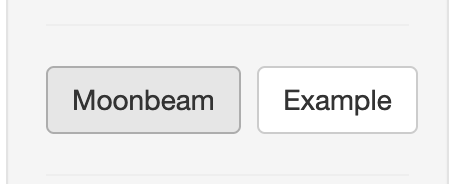
As an NSRR user, you can obtain your personalized token by visiting
http://sleepdata.org/token (This is the same token you’d use for the
NSRR Ruby download gem, which is fixed but specific to each NSRR
user.) After pasting in your token and clicking Authenticate, you will
see a list of available cohorts. The exact list will depend on which
NSRR cohorts you have permission to access.
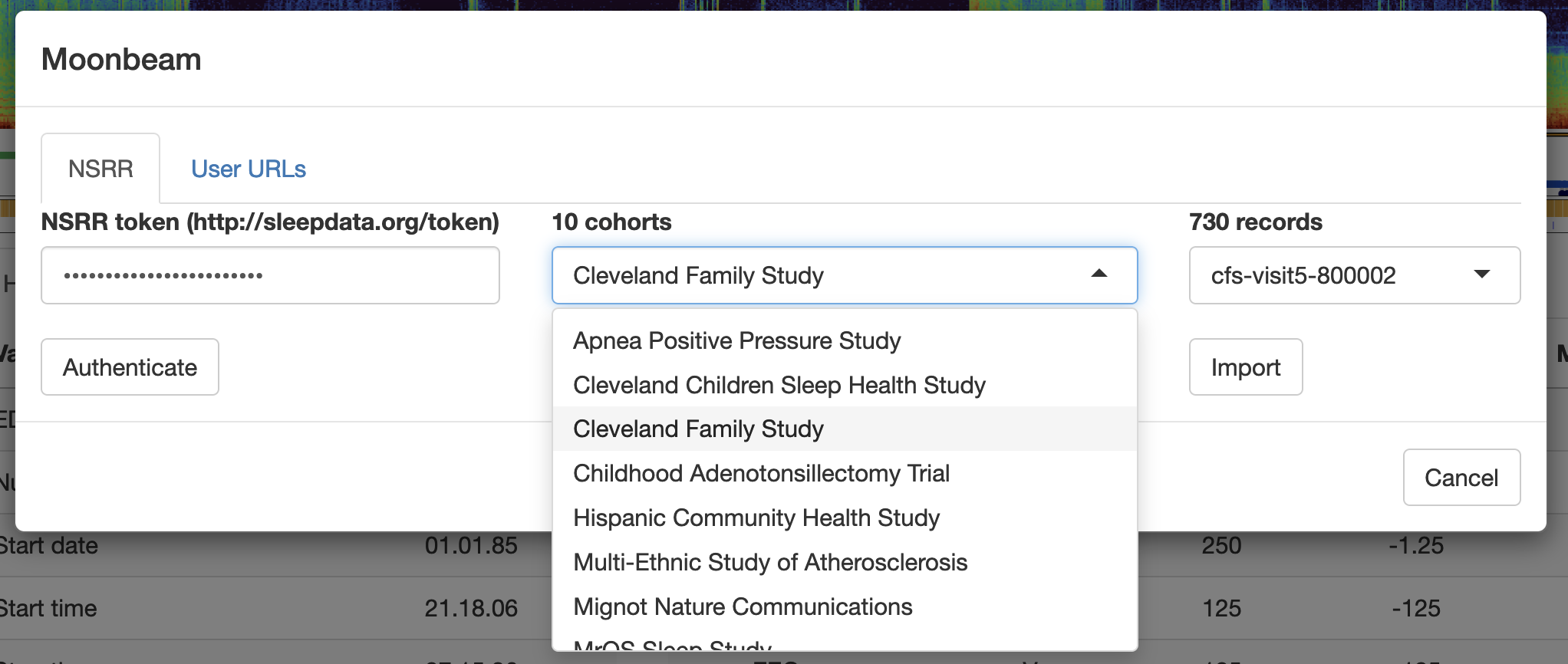
After selecting the cohort, the rightmost menu will be populated with the IDs of all recordings. Select one and click Import and after a little while the EDF and annotation data will be imported into Moonlight. As below, a new Moonbeam panel shows any covariate data for that individual, taken from the associated .csv files, in a searchable table that also lists the definitions of each variable:
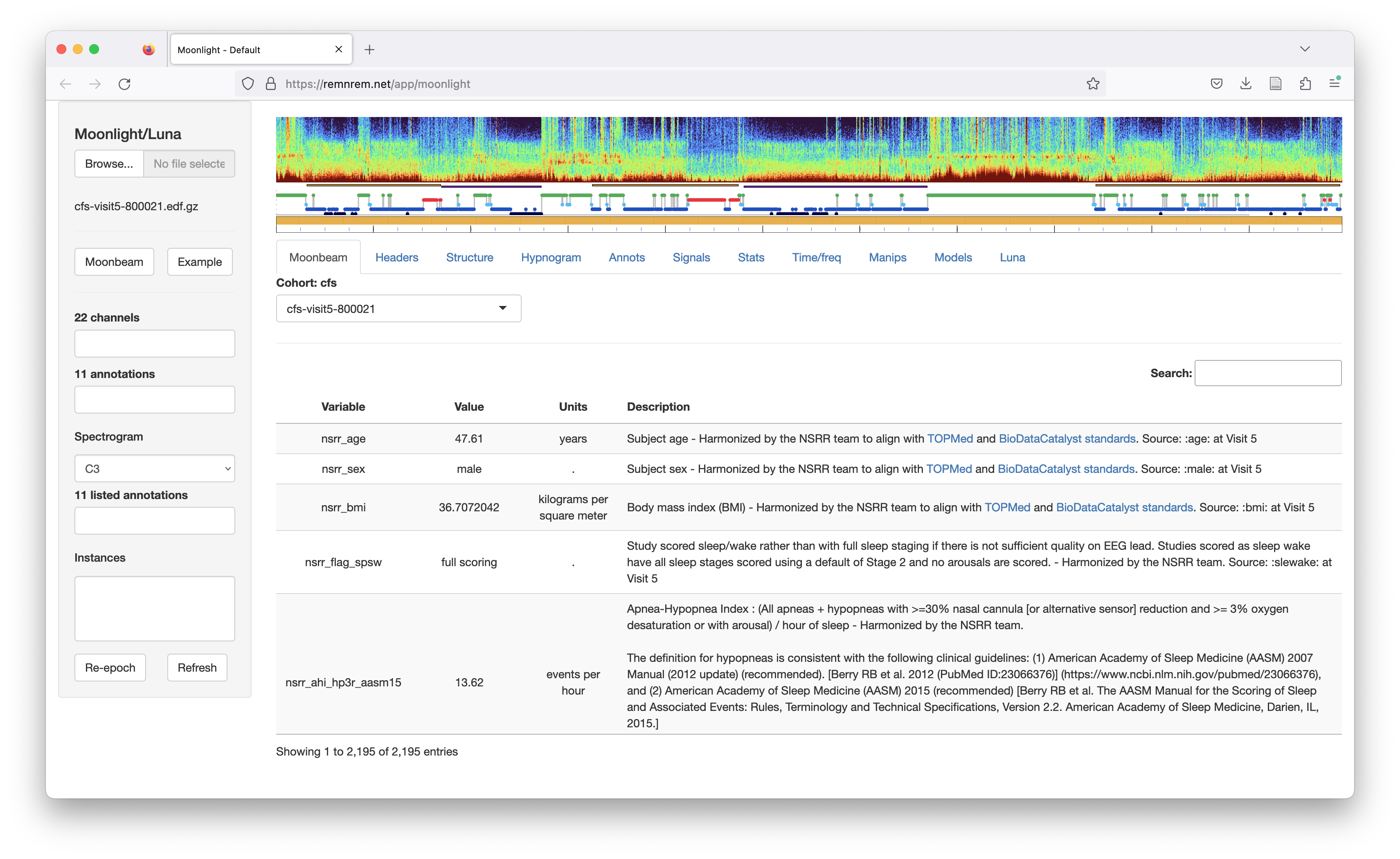
By selecting the Signals tab, you can view the raw signals, aligned to any annotations:
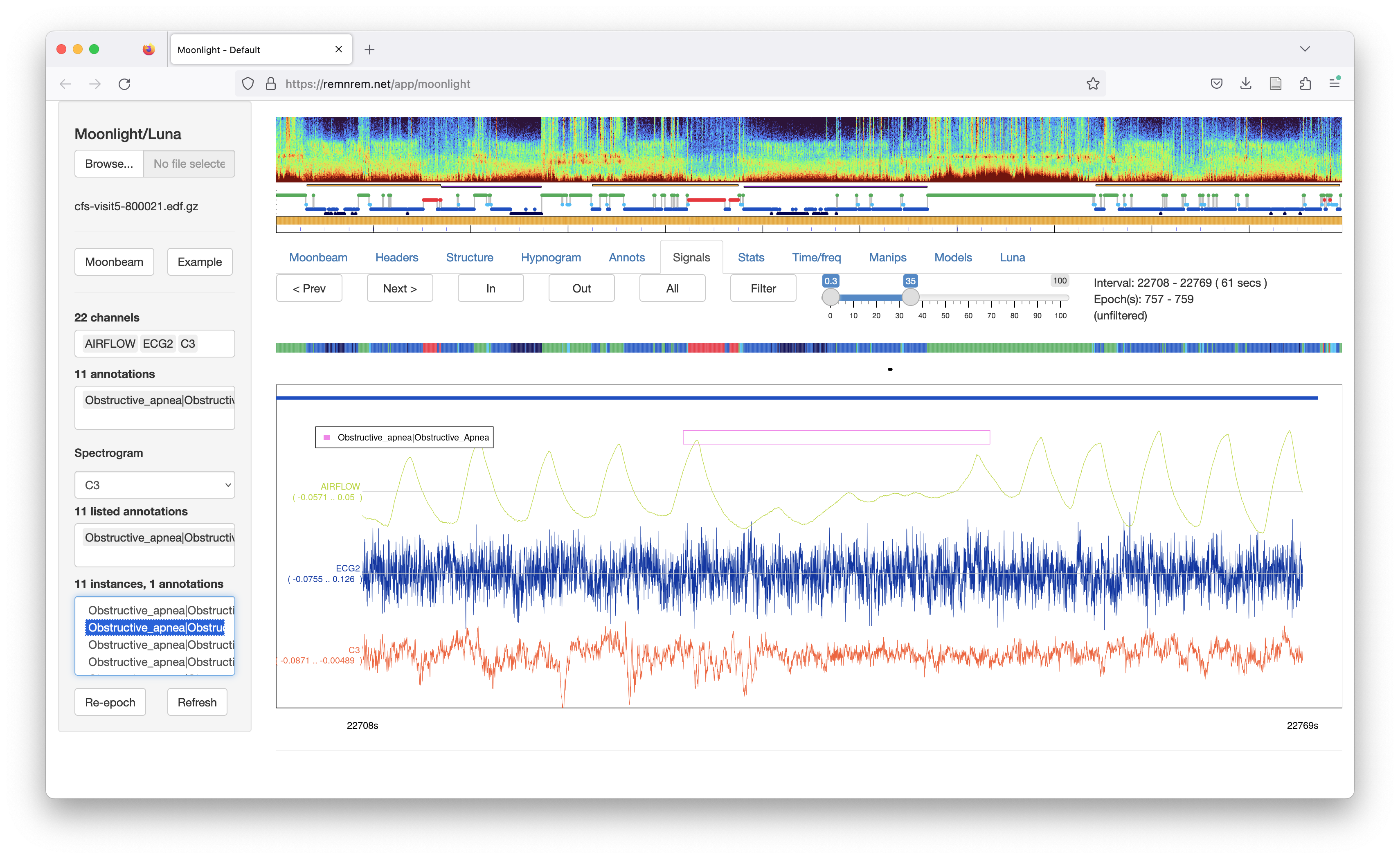
Moonlight supports numerous other visualization and data manipulation options. For example, here is a whole-night visualization of some signals based on epoch-level Hjorth parameters, which shows drop-out of the ECG for the middle part of the night:
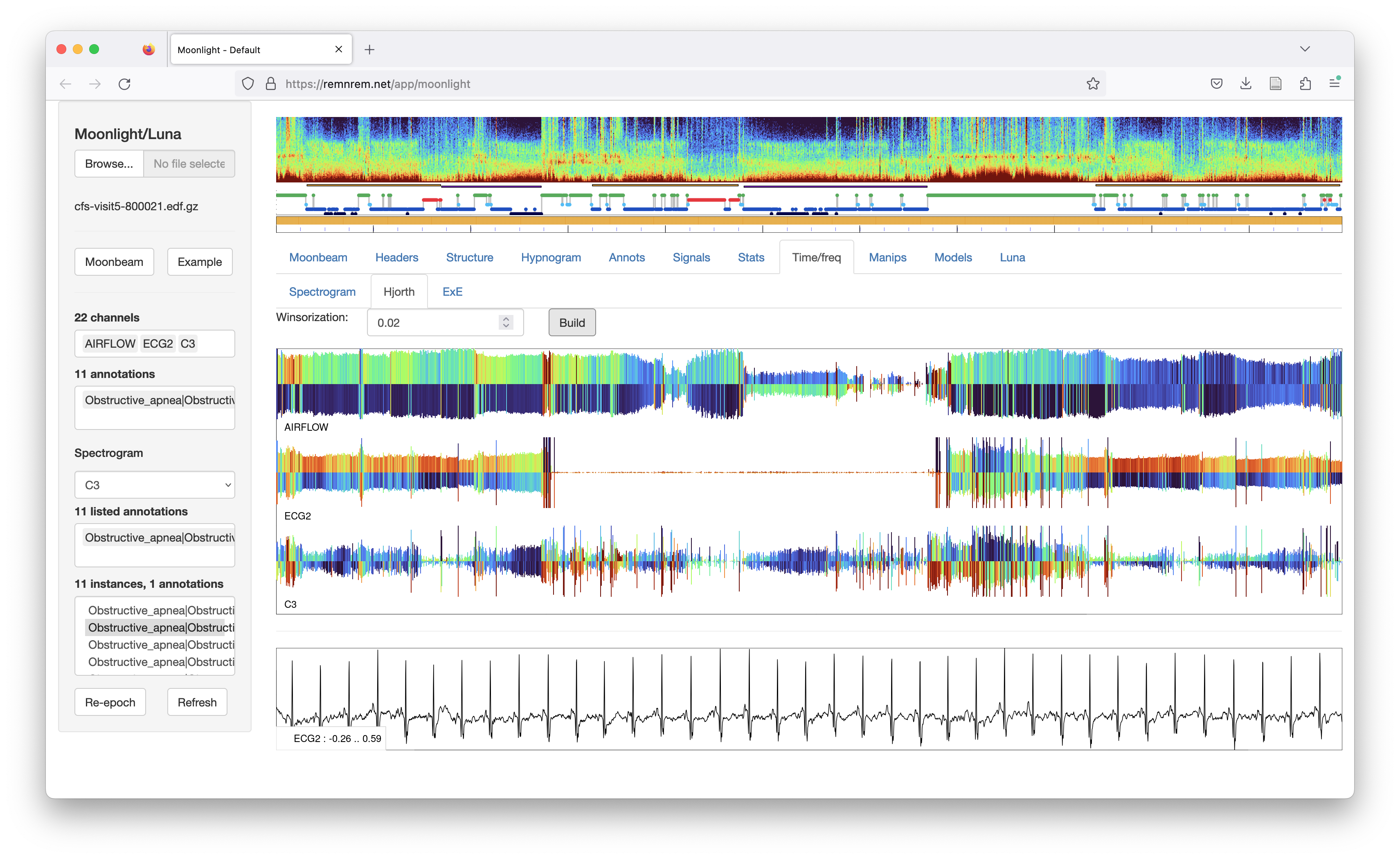
See the main Moonlight and Luna pages for more detailed descriptions of the various functions.
Uploading your own data
As well as viewing NSRR data, Moonlight can also be used to view your own EDF/annotation files:
-
upload files directly from your local machine (top left menu item from the main page)
-
via the User URLs option on the Moonbeam tab, that allows you to enter two links (HTTP URLs): 1) for an EDF and 2) optionally, an annotation file (NSRR XML format, or Luna .annot/.eannot format, as described here).
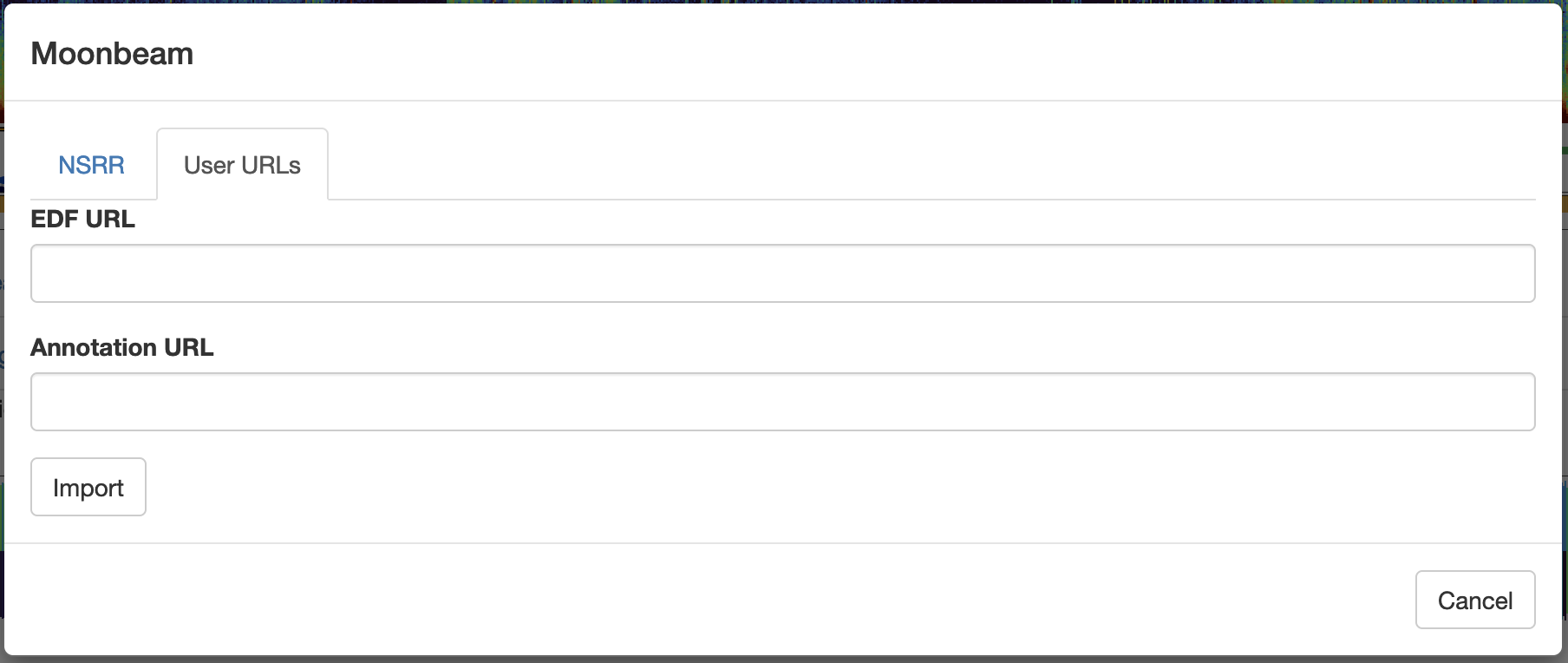
The ability for Moonbeam to transmit datasets from generic public URLs can be convenient, for example, if you have files stored on Dropbox or a similar cloud-based service that allows the creation of shareable links to files. This can be quicker than uploading a large file from your own machine, particularly if you have a slow local internet connection. It can also be used to allow others to view your data by simply sharing the links rather than having to share the original files.
Notes and caveats
-
Moonbeam/Moonlight are designed to view single recordings: it is not the right tool for downloading entire cohorts.
-
Downloads typically take roughly 5-15 seconds, but this may vary depending on the recording, current load on the server and your web connection. If the remnrem.net host is busy, you are likely to get better performance by using the local (Docker) version. If a download fails (the page grays out with a spinning wheel that lasts for longer than 20 or so seconds), close out the page and restart the app. If the issue persists, please contact us.
-
This first release of Moonbeam does not include all NSRR datasets. All datasets that have signal data will be incorporated in the near future. Please contact us if a desired NSRR dataset if currently missing.
-
Luna recognizes
lights_offandlights_onannotations and calculates hypnogram statistics appropriately. However, lights on/off times are not currently integrated into NSRR annotations, so take care when interpreting metrics such as SOL and TIB. -
We will monitor usage and interest in Moonlight/Moonbeam and potentially expand capacity of the AWS-hosted instance at https://remnrem.net